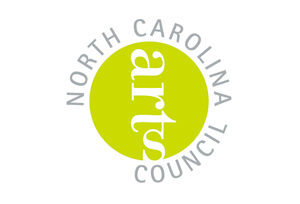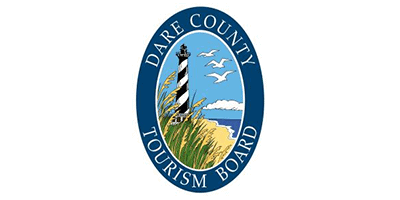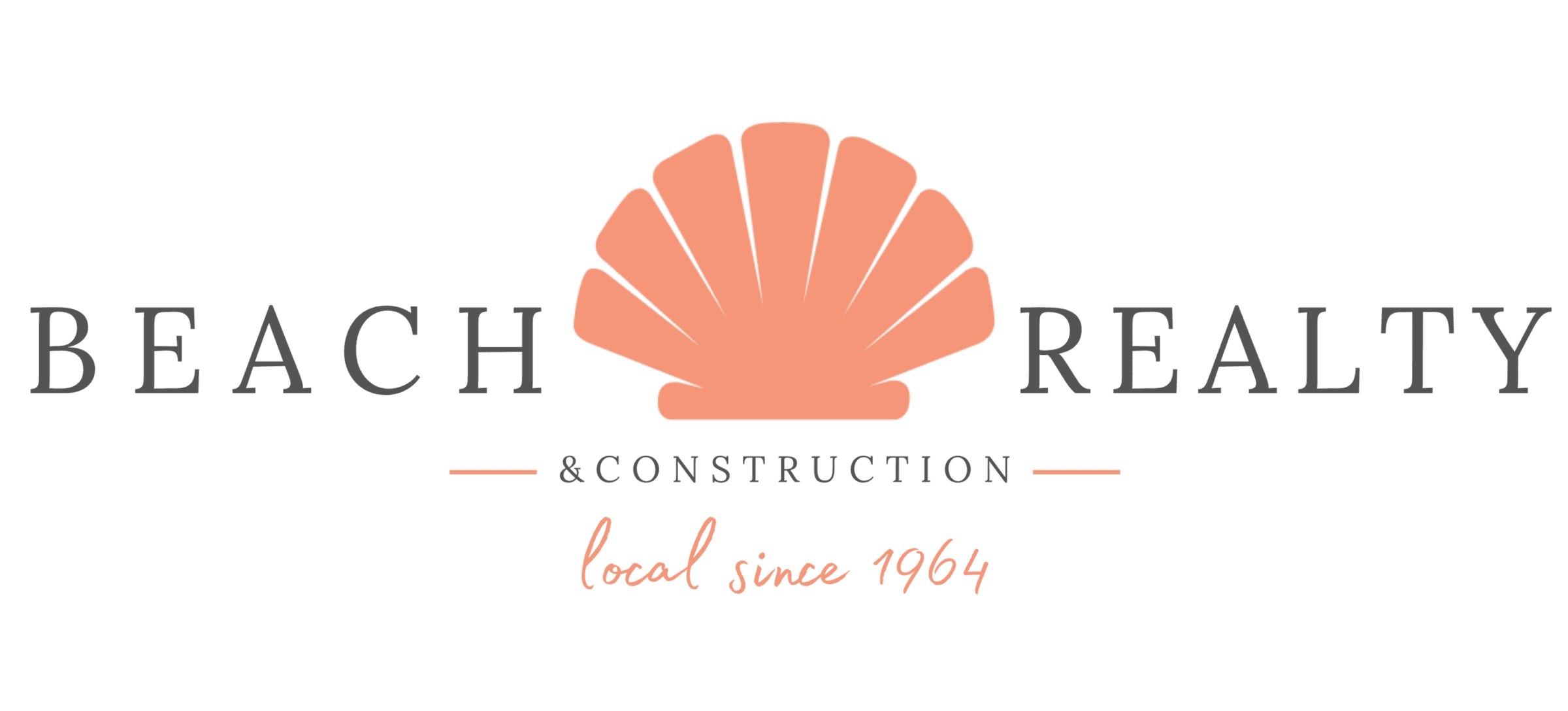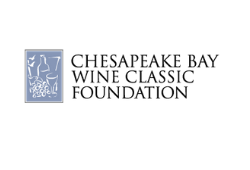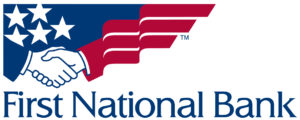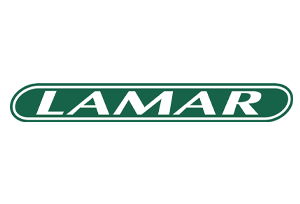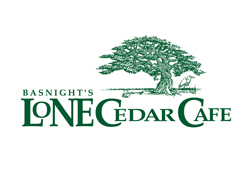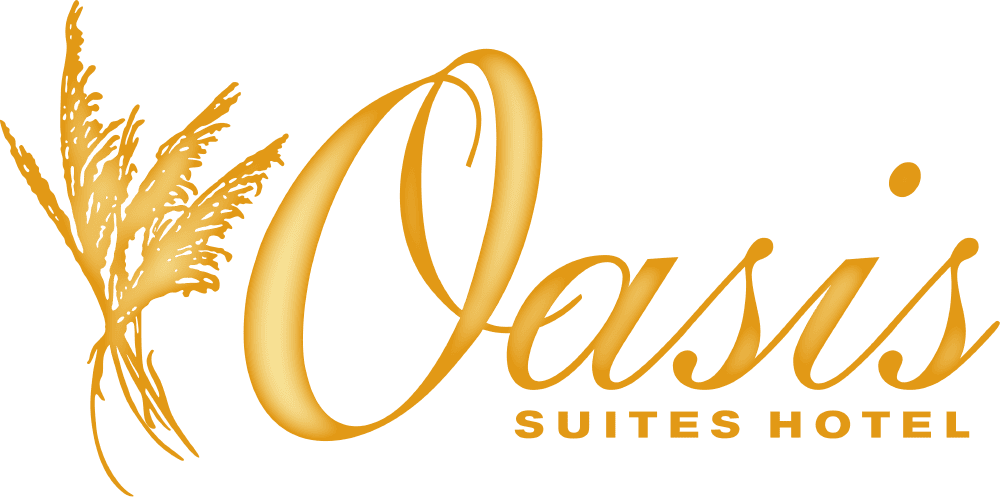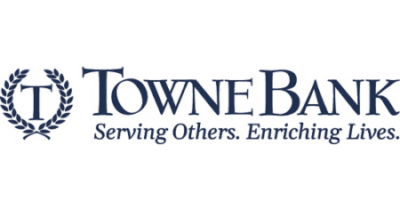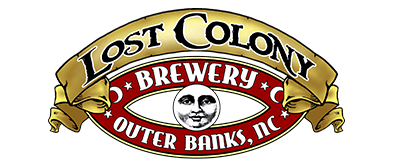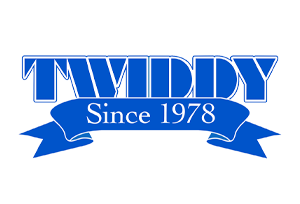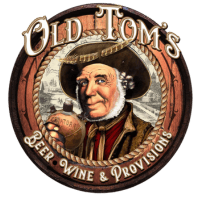Elizabethan Era
The events depicted in The Lost Colony took place during the Elizabethan era in England. The term, “Elizabethan Era” refers to the English history of Queen Elizabeth I’s reign (1558–1603). Historians often depict it as the golden age in English history and it’s been widely romanticized in books, movies, plays, and TV series. The Elizabethan age is considered to be a time of English renaissance that inspired national pride through classical ideals, international expansion, and naval triumph.
This English Renaissance saw the flowering of poetry, music and literature. The era is most famous for theatre, as William Shakespeare and many others composed plays that we still read and watch today. It was also an age of exploration and expansion abroad to establish colonies under English rule across the globe, including in The New World, to further England’s empire.
The Settlement at Roanoke
In 1587, 117 English men, women and children came ashore on Roanoke Island to establish a permanent English settlement in the New World. Just three years later in 1590, when English ships returned to bring supplies, they found the island deserted with no sign of the colonists. After nearly 450 years, the mystery of what happened to the colonists remains unsolved.
Elizabethan Societal Classes
The events depicted in The Lost Colony took place during the Elizabethan era in England. The term, “Elizabethan Era” refers to the English history of Queen Elizabeth I’s reign (1558–1603). Historians often depict it as the golden age in English history and it’s been widely romanticized in books, movies, plays, and TV series. The Elizabethan age is considered to be a time of English renaissance that inspired national pride through classical ideals, international expansion, and naval triumph.
This English Renaissance saw the flowering of poetry, music and literature. The era is most famous for theatre, as William Shakespeare and many others composed plays that we still read and watch today. It was also an age of exploration and expansion abroad to establish colonies under English rule across the globe, including in The New World, to further England’s empire.
The Monarch
Elizabethan England was a time of many changes and developments which is often considered the Golden Age of English history. This era was led by Queen Elizabeth I, the sixth and last ruler of Tudor. She was a wise and just Queen who chose the right advisers and was not dominated by them. She ruled for 45 years.
Nobility
The Lost Colony Western Europe Map Society began to form along new lines during the Tudor years and it was an age of individuality. Nobility and knights were still at the top of the social ladder. These men were rich and powerful, and they have large households. The real growth in society was in the merchant class. Within the nobility class there was a distinction between old families and new. Most of the old families were Catholic, and the new families were Protestant. During Shakespeare’s time there were only about 55 noble families in England. At the head of each noble family is a duke, a baron or an earl. This class is the lords and ladies of the land. A person becomes a member of nobility by birth, or by a grant from the queen or king. Noble titles were hereditary, passing from father to oldest son. It took a crime such as treason for a nobleman to lose his title. Many nobles died during the War of the Roses, a series of civil wars fought during the 15th century. The Tudor monarchy, Elizabeth, her father Henry VIII, and her grandfather Henry VII rarely appointed new nobles to replace those who died. They viewed the nobility class as a threat to their power and preferred to keep the number of them small. Being a member of the nobility class often brought debt rather than profit. The expectations of the class and the non paying honorific offices could bring terrible financial burdens. They maintained huge households, and conspicuous consumption and lavish entertainment was expected. Visiting nobles to England were the responsibility of the English nobility to house and entertain at their own expense. Appointment to a post as a foreign ambassador required the ambassador to maintain a household of as many 100 attendants. Most of Queen Elizabeth’s council, chief officers in the counties came from the noble families. They were expected to serve in an office, such as being an ambassador to a foreign country, at their own expense of course.
Gentry
The Gentry class included knights, squires, gentlemen, and gentlewomen who did not work with their hands for a living. Their numbers grew during Queen Elizabeth’s reign and became the most important social class in England. Wealth was the key to becoming a part of the gentry class. This class was made of people not born of noble birth who by acquiring large amounts of property became wealthy landowners. The rise of the gentry was the dominant feature of Elizabethan society. They essentially changed things, which launched out new paths whether at home or overseas, provided leadership and spirit of the age, who gave it character and did its work during this era. The gentry were the solid citizens of Elizabethan England. Francis Drake, the famous explorer and Sir Walter Raleigh, who led the way to the English colonization of America were of the gentry class. Two of the queen’s chief ministers, Burgley and Walsingham were products of the gentry. Francis Bacon, the great essayer and philosopher also came from this class. The gentry were the backbone of Elizabethan England. They went to Parliament and served as justices of the Peace. They combined the wealth of the nobility with the energy of the sturdy peasants from whom they had sprung.
Merchant
The Tudor era saw the rise of modern commerce with cloth and weaving leading the way. The prosperous merchant class emerged from the ashes of the Wars of the Roses. The prosperity of the wool trade led to a surge in building and the importance cannot be overstated. Shipping products from England to various ports in Europe and to the New World also became a profitable business for the merchants. Prices for everyday food and household items that came from other countries increased as the merchants gained a monopoly on the sales of all goods under the pretence it would benefit the country where it really benefited the pocket of the merchants.
Yeomanry
This was the “middling” class who saved enough to live comfortably but who at any moment, through illness or bad luck be plunged into poverty. This class included the farmers, tradesmen and craft workers. They took their religion very seriously and could read and write. This class of people was prosperous and sometimes their wealth could exceed those of the gentry, but the difference was how they spent their wealth. The yeoman’s were content to live more simply, using their wealth to improve their land and expand it.
Laborers
The last class of Elizabethan England was the day laborers, poor husbandmen, and some retailers who did not own their own land. Artisans, shoemakers, carpenters, brick masons and all those who worked with their hands belonged to this class of society. In this class we can also put our great swarms of idle serving-men and beggars. Under Queen Elizabeth I, the government undertook the job of assisting the laborers class and the result was the famous Elizabethan Poor Laws which resulted in one of the world’s first government sponsored welfare programs. This era was generally peaceful as the battles between the Protestants and the Catholics and those between the Parliament and the Monarchy had subsided.
Historical Figures featured in The Lost Colony
Queen Elizabeth (1533-1603)
Queen Elizabeth was probably England’s most popular sovereign. In March 1584 she granted Sir Walter Raleigh a patent entitling him to occupy such lands as he may discover in the name of the crown of England. As a result of this patent, she was the benefactor of Virgina. In honor of her, the “Virgin Queen,” the name Virginia was given to the territory claimed by Raleigh’s men in the New World. Elizabeth I has been credited with the devotion to duty and love of her country that has made “England” stand forever.
Captain Philip Amadas (1550-1618)
An English navigator who was sent by Walter Raleigh to explore the North American coast of the New World. On April 27, 1584, he and Captain Arthur Barlowe set sail and commanded one of the two barks that made the first English voyage to Roanoke Island. He was trained in navigation by Thomas Harriott, English scientist and mathematician. Amadas returned to Roanoke Island in 1585 as “Admiral of Virginia.” His reports to Walter Raleigh provided “glowing accounts” of new found land in the New World.
Captain Arthur Barlowe (1550-1620)
An English navigator also trained by Thomas Harriott, sent by Walter Raleigh to explore the North American coast of the New World. He was second captain to Amadas on the 1584 voyage to the North American coast. He accompanied Amadas on the visit to Chief Wingina village on Roanoke Island. On their return back to England in September 1584, they took back with them two Indians, Wanchese and Manteo, who were taught English and served as propaganda for the second voyage back to the New World. Barlowe is also known for his entertaining report to Walter Raleigh describing their discoveries and experiences of the 1584 Virginia voyage.
Ananias Dare (1560-1587)
An English tiler and bricklayer, was the father of Virginia Dare, the first English child born on Roanoke Island. He was married to Eleanor White and was the son-in-law of Governor John White, who was appointed by Sir Walter Raleigh to lead his Roanoke colony. His name was third on the list of thirteen men to whom Sir Walter Raleigh granted certain privileges for establishing a colony in Virginia. Dare was also the first scientific illustrator appointed by Queen Elizabeth to illustrate everything in particular that he observed that was different from English eyes. It is believed that Ananias Dare lost his life while defending the fort on Roanoke Island from the local Native Americans.
Eleanor White Dare (1563-1599?)
One of the sixteen women who left England in 1587 as part of the Roanoke expedition. She was the daughter of Governor John White and wife of Ananias Dare. Eleanor gave birth to Virginia Dare, the first child of English parents born on August 18, 1587 in North America shortly after their arrival from England. She disappeared with the colony while her father Governor White returned to England for supplies.
Virginia Dare (1587-?)
The first child to be born in America of English parents on August 18, 1587. The infant, Virginia Dare vanished along with all of the other Roanoke colonists while awaiting supplies ships from England who was in the middle of the Spanish Armada. It is believed that what survivors of the “Lost Colony” there may have been were absorbed into the Croatan tribe.
Simon Fernandez
Simon Fernandez was a Portuguese navigator from Azores Island. He piloted the Roanoke Voyages from 1584 to 1587. Fernandez was by trade a privateer in the escalating war between England and Spain. The Chesapeake Bay area was originally the decided area for the 1587 voyage with Governor White and his colonists. By the time the caravan arrived at Roanoke Island to check on the fifteen men that were left a year earlier, he had grown inpatient with Governor White and anxious to resume the hunt for Spanish trading. He ordered the colonists ashore on Roanoke Island and abandoned the idea of taking the colonists to the Chesapeake Bay area. Ten days later, Fernandez departed for England taking along the anxious John White, who reluctantly decided to return to England for supplies.
Ralph Lane (1530-1603)
From Northampton, Ralph Lane may have served in the Parliament before engaging in various maritime activities and in the struggle against Spain. He was Governor for Sir Walter Raleigh’s first Roanoke colony in 1585 which consists of 107 military men which last approximately ten months from August 17, 1585 to June 18, 1586. Lane was knighted in 1593 and is buried in Dublin where he died.
Manteo
Manteo was the Chief of a local Native American tribe that befriended the Ralph Lane colony that arrived on Roanoke Island in 1585. Arriving too late in the year to plant crops and harvest for food, Manteo helped the colonists avoid starvation until they were able to provide food for themselves. He made two trips to England and was listed among those sailing for the New World in 1587 with Governor White and his colonists. By the command of Sir Walter Raleigh, Manteo was christened on Roanoke Island and invested with the title of a feudal baron, Lord of Roanoke and Dasamonqueponke on Sunday, August 13, 1587. This was the first peerage elected by the English in America. Manteo was also the first Native American to be received into the Church of England. It was Manteo and his people at Croatoan that the colonists expected to turn to in case of need until Governor White returned from England with supplies.
Sir Walter Raleigh (1522-1618)
Born to a protestant family in Devon he is one of the most colorful characters in English history. Navigator, historian, soldier, poet and explorer, he initiated the Roanoke voyages and English colonization of the New World. Raleigh never visited the New World. He is credited with having introduced both the potato and tobacco to England from America. He was knighted by Queen Elizabeth in 1585. It is historically true that the episode of the cloak thrown in the puddle for Queen Elizabeth I did indeed happen. It was from this incident that Raleigh’s favor with the Queen grew.
Wanchese
Wanchese was a Native American chief of Roanoke Island and probably a member of the eastern division of the Algonquian tribe. He returned to England with Captain’s Amadas and Barlowe’s expedition and became bitter towards the English.
John White (1540-1593)
English artist and one of several early English colonists who sailed with Sir Richard Grenville’s expedition in 1585. During his time at Roanoke Island he made numerous famous drawings with watercolors of the landscapes and native people. His superb watercolors of native plants, animals and Indian life, give us an insight into what the English found during their explorations. White was described as a “Gentleman of London” and became Governor of the second Roanoke colony in 1587. He led a band of settlers sent out by Sir Walter Raleigh under the authority of the Virginia Company. He was the father of Eleanor Dare and grandfather of Virginia Dare, the first English born child in the New World. He returned back to England for much needed supplies and was not able to return in 1590 finding the colony empty. He spent the remainder of his life in England and Ireland.
The Colonists
Very little is known about the vast majority of the colonists explorers who were not leaders. What little is known is interesting simply because it is a first step toward understanding who the colonists might have been and in trying to guess why they wanted to come to the New World.
Mark Bennett and William Berde
Mark Bennett and William Berde both “Lost Colonists” are described quite simply as husbandman and a yeoman. Richard Berry, also a member of John Whites colonists was described as a “gentleman” and was a muster captain in 1572. Anthony Cage, another 1587 colonist, had been sheriff of Huntington in 1585. Two other “Lost Colonists,” James Hynde and William Clement, had been in prison together in Colchester Castle for stealing.
Thomas Ellis
Thomas Ellis of the “Lost Colony” was at the other end of the social ladder. Before leaving home in Exeter, he had been a member of the vestry of his parish church, St. Petrock, which still stands today on the main business street of Exeter. It is believed that John Hewet was the “Lost Colonist” lawyer. He held a bachelor of civil law from Oxford. John Spendlove, later a “Lost Colonists” was described on a 1585 muster list as a “gentleman” and reported present with his horse.
It is also believed that there were three men who returned with Governor John White in search of the “Lost Colonists” who had the same or similar surnames as some of the members of the vanished expeditions. Robert Coleman, Henry Millett, John Taylor were in search of Thomas Colman and his wife, Michael Mylett and Clement and Hugh Taylor.
Economic and Social Class Availability of Food
The availability of food during the Elizabethan Era was based on economic and social class standing. Home grown produce was used to feed the majority of the English. Poor harvests which occurred during the 1590’s, had a bad effect on the economy and led to starvation in some areas. The booming wool trade changed the face of agriculture and the land enclosures led to an increase of the number of people living in poverty and the introduction of the 1601 Poor Law.
Social class played a very important role in Elizabethan England in almost every aspect of life. Food and drink were no exception to this rule; it varied according to status and wealth. The food available to the Upper Class differed considerable to the food available to the lower class. The Upper Class also enjoyed various spices imported from abroad.
Presentation of food was also important during the Elizabethan era especially for the nobility. It was important that their feasts and banquets had a great visual effect. Colors, different serving methods, and various “props” also used to enhance the presentation of a meal. Peacocks were not raised just for the meat of the poultry but also for its feathers. The feathers were used to decorate the foods that were served during the banquets. Any imported foods were expensive and out of the reach of Lower classes and used primarily by the monarch and nobility classes.
Meat was the primary food consumed by the wealthy and privileged class. It was the most popular food and usually sold at large livestock markets. The rich of Elizabethan England ate well. Meats such as lamb, beef, mutton, pork, goat, bacon, veal, rabbit, and fowl such as peacocks, swans, herons, and goose were served. Chicken were believed to be introduced to England by the Romans. Only Lords and Nobles were allowed to hunt deer, boar, hares and rabbits. They also ate different kinds of freshwater and ocean fish such as herring, salmon, eel, whiting, cod, trout and pike. Shell fish including crab, oysters, mussels and cockles were also featured in Elizabethan recipes.
Meat, fishes and poultry were cooked in varied ways as well. Some of the more common methods were spit, roasting, baking, boiling, smoking, salting and frying. Smoking of the meat was very popular and was intended to preserve the food. The people during this era mostly preferred cooking that done over an open flame. Meat was cooked on a spit which was sometimes turned by a dog running on a circular treadmill attached to the end of the spit. Other useful cooking utensils for cooking over an open flame were pots, pans, skillets and cauldrons. Food preparation was made possible with the use of ladles, knives, meat forks, and scissors. Baking trays made from hardened pastry called a “coffin” was used for baking. Baking was also done in iron boxes laid on the fire or in a brick oven that was set into the side of a fireplace. The mortar and pestle were essential in grinding nuts and spices for the Elizabethan recipes that was kept in a book by each cook. In the Upper Classes, the kitchens were in large houses or castles some distance from the main house and food was generally served cold.
Improved agriculture techniques and inventions gave way to an increase in herbs, vegetables, and fruits such as turnips, parsnips, carrots, onions, leeks, garlic and radishes, apples, pears, plums, cherries and woodland strawberries. It was common to prepare these by roasting or boiling and serving with bread.
Sugar, honey, and marzipan became popular during this era as the Tudors were very fond of desserts. Sugar was imported to England, having been obtained from sugar cane. They enjoyed pastries, tarts, cakes, cream, custard, and crystallized fruit and syrup. On special occasions such as banquets, all kinds of specialties would be made out of sugar and marzipan such as animals, birds, fruits or baskets. Sometimes wine glasses, dishes would be made out of crisp molded sugar called sugar-plate which would be elaborately decorated.
Food items were generally purchased from small markets and from fairs. In larger cities there were specific markets which sold fish, dairy products, fruits and vegetables. The term “vegetable” was rarely used to describe what we call vegetables today. Instead the term “herb” was used for all green plants, roots, and herbs. Food items that came from the ground were only good enough for the lower classes. Only vegetables such as rape, onions, garlic and leeks were set on a Noble’s table.
Food began changing over the course of the Tudor period. More and more foods were being introduced into society as they were discovered in the New World. Tomatoes or “love apples” from Mexico, Turkey from Central America, Kidney Beans from Peru and of course the famous potatoes brought to England by Sir Walter Raleigh. Chili peppers, including red peppers, cayenne, and paprika were also imported from the New World. One of the most sought after spices was pepper. The discovery of Chili peppers in the New World was very encouraging to the Elizabethan explorers. Vanilla, pineapples, lima beans, peanuts, tapioca, pumpkins, corn, avocado, pecans, cashews, squash, coffee, maize, chocolate and tea were also introduced during the Elizabethan era.
The Early Crusaders had brought back to England the element of eastern cooking with spices such as pepper, cinnamon, mace, ginger, cloves, raisins, saffron and sugar. These Medieval recipes were passed down to Elizabethan recipes. Spices were welcomed in the preparation of a meal as their distinctive flavors disguised the strong and dominate taste of salt which was used to preserve the meat. Spices were very expensive and used in these cooking recipes for the Upper Class. It became a matter of both social fashion and prestige and a sign of wealth and high social status. The Oriental Spice Trade was very important and the most profitable in European trade. The drive for profit through new spices as well as the quest for gold and silver was what encouraged the explorations of Sir Francis Drake and Sir Walter Raleigh.
Elizabethan Drink
Water was not clean during the Elizabethan Era, and thus people drank ale and wine. The Upper Classes drank both and the Lower Classes just drank ale. Honey was used to make a sweet alcoholic drink called mead which was drunk by all classes. Wine was imported, although there were a few fruit wines produced in England. Most of the wines were sweet and rather heavy. They probably had to be strained before they could be drunk, and could still have solid matter floating in them. “Apple-wine”, a form of cider was also produced during the Elizabethan era. Ales were brewed with malt and water and were relatively flat, while beer contained hops of a bitter flavor. Bayberries, orris, and long pepper were flavors that could be added to ales and beers for a variety of tastes. It was estimated that a person would consume about a gallon a day of weak low alcohol drinks during the Elizabethan era.
Daily Meals
The main parts of the basic diet during Elizabethan times were bread, meat, and fish. Bread was the most important component of the diet. The Upper Classes ate Manchet, a bread loaf made of wheat flour. The Lower Classes ate bread loaves of rye and barley.
Dairy products produced during Elizabethan England included milk, cream, butter and cheese. Milk was used as a beverage, and cream, curds, whey, butter and cheese was a by-product of this commodity. Strawberries and cream was a delightful treat and eggs were abundantly consumed. Several types of cheeses were available during this era.
Hard cheeses were made from skimmed milk, and soft cheeses were made from whole milk. Butter was stored in wooden barrels called firkins and was only used by the Upper Class for cooking food as all dairy products were determined inferior foods and only to be eaten by the poor.
Biscuits, invented by the Crusaders were considered a convenience food during the Elizabethan era. The “Ploughman’s Lunch” consisting of cheese and bread was a staple diet of the Lower Class workers. Communal ovens were also available in villages for baking pastries and pies with cooked roasted meat which were sold on the street to the villagers during an outing to the Theatre or a fair.
How many times a day you ate and what you ate with depended on your social class. Upper classes and nobility would eat three meals a day using glass, delft blue pottery from Holland and silverware. China ware was unknown at this time. Lower classes would eat two to three meals a day using wooden or horn dishes and pewter. Everyone used their own knife, and spoons were rarely used as soup and liquids were drunk from a cup. Forks had just been introduced in the late 14th century and were still evolving around the country.
The Upper Classes would usually eat breakfast consisting of food and drink between 6-7 am. Dinner was the midday meal of food and drink served between noon and 2 pm. Supper was a substantial meal of food and drink served between 6-7 pm along with various forms of entertainment. The Lower Classes meals were far less elaborate than the Upper Classes and did not include entertainment during supper. The average Lower Class citizen consumed at least ½ lb of bread, 1 pint of beer, 1 pint of porridge and ¼ lb of meat daily. This could be supplemented by some dairy products, and vegetables were the main ingredient of their soups. Food for a Tudor soldier would consists of 2 lb. of beef or mutton accompanied with 1 lb. of cheese, ½ lb of butter, 1 ½ lb of bread, and almost a gallon of beer. Beer in the Elizabethan era had a very low content of alcohol. The quantity and content of the food eaten by the Upper Class was considerably different form the diet of the Lower Classes. The number of courses and variety of the foods consumed by the Upper Class included expensive spices and ingredients and exotic recipes.
Preservation
Food varied according to season as there were no methods of freezing foods in Elizabethan England. For economic reasons, animals were slaughtered in the fall of the year as to not have to feed them during the winter. Salt was used to preserve the meats and thus the food always had a salty taste. Methods were introduced to disguise the salty taste. Spices, including pepper, mustard, saffron, cloves, cardimon and cinnamon were added to recipes and a variety of sauces were used to disguise the salty taste. Stews and potages formed an important element in the diet of Middle and Lower Classes. The introduction of food processing was used to soften meat and vegetables. Soaking roots, leaves, seeds, nuts and berries in cold water for several hours made the food easier to digest. Salted meats and fish were rinsed in several changes of liquid before cooking to weaken the salty taste. Pickling and smoking were also used as methods of preservation.
Fresh flowers and herbs were preserved to use in flavoring winter dishes. The preparation of preserved food took place in the Stillroom. This is where distillations, preserves and delicate floral syrups were prepared. The Stillroom was also used to prepare medicinal tinctures and herbal potions. The most important use if the Stillroom was to produce alcoholic beverages.
The Upper Class could afford to expand the use of sugar and honey as a sweetener in many Elizabethan recipes. Jams, marmalades and curds were made from a variety of fruits.
Elizabethan Diet
Elizabethan food and drink did not constitute a good balanced diet. The rich ate few fresh vegetables and little fresh fruit. Fruit was usually served in pies or preserved in honey. Vegetables and fresh fruit were eaten by the poor, usually in some form of stew, soup or porridge. Food items which came from the ground and dairy products were considered only fit for the poor.
The diet of the poor and Lower Classes was better than those of the Nobles and Upper Class. Because of the snobbery of eating fresh vegetables, fruits and dairy products the Upper Classes suffered from lack of Vitamin C, calcium and fiber in their diet. This led to an assortment of health problems for those running the country. Bad teeth, skin diseases, scurvy, and rickets were just a few health problems the rich encountered. Sugar, only affordable to the rich was known to blacken teeth. It became fashionable to have your teeth blackened by applying cosmetics to get this effect if enough quantities of sugar were not available to you.
Religion played an important part in the diet of the Elizabethan people. There were certain times the eating of meat was banned. Certain religious observances banned the eating of meat on Mondays, Wednesdays, and Fridays. Meat was also banned during the religious seasons of Lent and Advent and on the eves of many religious holidays. Fasting and abstaining from meat was observed for over half the days of the year.
Elizabethan Banquet & Feast
The Elizabethan Royalty, Nobility and Upper Classes were known throughout the country for their lavish and sumptuous banquets and feasts. New foods and spices arriving daily from the New World inspired new recipes using the finest foods and ingredients. The Royal banquets of the Elizabethan Era were the most magnificent. The Tudor Dynasty, especially the father of Queen Elizabeth, King Henry VIII was always in competition with the French King.
Cooks employed by Nobles during the Elizabethan era would endeavor to provide Queen Elizabeth with a feast or banquet of a similar standard and content set by the high standards set by the French. An example of an Elizabethan Banquet is outlined:
Elizabethan Government
The Monarchy
The government of Elizabethan England was centralized, well organized and very efficient. It was very much a personal monarchy with ministers who answered to the Queen. Queen Elizabeth’s personality determined the style, intensity and efficiency. She led her people for 45 years and produced great developments and advancements for England. During her time, monarchs were not just figureheads. She was the ultimate decider and was able to rule on issues of religion, when Parliament would sit and what it would discuss, war and peace, education, and the welfare of her citizens, all the way down to what food they would eat and what clothes they could wear. She was a wise and just Queen, who chose the right advisers and never let herself get dominated by these advisers. She dealt with the stubbornly resistant members of Parliament without being tyrannous, and was cleaver at compromising in both religious and political matters. She was the sixth and last of the Tudor dynasty.
The Divine Rights of Kings made the monarch a Demigod. The Divine Right of Kings instilled obedience by declaring all social ranks religiously and morally obliged to obey their government. Rebelling against the monarch was not only a crime; it was a sin.
All laws required the Queen’s consent in order to be passed. The Queen could not write and pass laws herself. She had to draw up a Bill and put it forward to Parliament for consideration and approval. However, the Queen could make Royal Proclamations without Parliament’s consent.
The Privy Council
The Privy Council was Queen Elizabeth’s group of advisers and its main purpose was to give numerous different opinions to the Queen after which she made a decision. Often their advice was ignored but the Council still had to carry out the Queen’s wishes. The Council took care of routine administration which involved matters of religion, military, the Queen’s security, economics, and the welfare of the citizens. The Council dealt with matters of national and individual interest, issued proclamations in the Queen’s name and supervised law and enforcement. The Council could not make any decisions; they could only advise. The members of the Council were chosen by the Queen. Powerful noblemen were always necessary on the Council, so that their and their realms’ interests were represented and rebellion was kept at bay. Queen Elizabeth believed the more members of the Council, the more opinions and problems. She dropped the number of Council members from 50 to 19 and eventually to 13. At the beginning of her reign, the Council met three times a week; by the end her reign, they met almost every day.
The Secretary of State, Sir William Cecil led the Council. He was wise, cautious, cooperative with Queen Elizabeth and trusted by all others. He was also the Queen’s personal secretary and chief adviser until his death. He is known as one of the greatest English statesmen. His successor, Sir Francis Walsingham, was the mastermind of the English spy network which defended Queen Elizabeth against foreign powers and plots. He was succeeded by Sir Robert Cecil.
Parliament
A group of representatives called Parliament was divided into two sections. The House of Lords or the Upper House consisted of bishops and aristocrats. The House of Commons or the Lower House consisted of common people. There were no political parties or a Prime Minister associated with Parliament during the Elizabethan era.
The main function of Parliament at this time in history was to deal with financial matters such as taxation and granting the Queen money. The monarch paid for daily administration with ordinary revenues from customs, feudal dues and sales of land. Parliament covered extraordinary expenditures such as war with taxation. If taxation did not supply enough funds for military expenditures, more land was sold or Parliament resorted to assorted illegal schemes. . Parliament also passed laws. During Queen Elizabeth’s reign, 438 public and private laws were passed. Public laws applied to everyone, while private laws only applied to certain people. Parliament could undo a law if both houses agreed three times and the Queen was also in agreement. The Queen could make laws by Royal Proclamation without Parliament’s consent. Parliament could also advise the Queen, but she was seldom interested in their advice.
Elections only occurred for the members of the House of Commons. These members were supported by the important local people from their locale. The members of the House of Commons only had voting power if they were male and received a certain annual income. The Queen decided when Parliament would be called to session. Queen Elizabeth I only called Parliament to session 10 times during her reign.
Local Governments
Local governments were important to the citizens of Elizabethan England. Every county had royal representatives such as Justices of the Peace, Sheriffs, and Lords Lieutenant. They insured that the Queen’s command and laws were enforced and obeyed.
Regional governments were responsible for overseeing parts of England that the Privy Council could not supervise. The Council of the North, which resided in York, was responsible for Northern England, and the Council of the Marches, which resided in Ludlow, was responsible for Wales and some border counties.
Manors were run by nobility and gentry. Owning land was what made one powerful. Those with land were wealthy and masters of the tenants on their land, which gave them major influence. It was a position of responsibility as they were meant to aid the monarchy by governing their own land. Grievances were taken to the Lord of the manor and the tenants were loyal to him. His political views were greatly impacted on his tenants as well.
Each city and town had its own government, head by a mayor.
Courts
The judicial system of Elizabethan England was made up of several courts. The most important courts were the Great Sessions Courts or the Assizes, and the Quarter Sessions Courts which dealt with most crimes. The Great Sessions Courts were held twice a year in each county, and the Quarter Sessions Courts were held four times a year. The Assizes was famous for its power to inflict harsh punishment.
Petty Sessions Courts, Manor Courts, and town courts handled unimportant crimes. Civil cases were dealt by various courts depending on the person’s monetary status. The Star Chamber, one of the highest profile courts, was mostly Privy Counselors trying the wealthy. The Court of Chancery judged criminal cases, and the Exchequer of Pleas handled the financial suits. The Court of Requests dealt with the poor or “poor man’s causes, and the Church Courts handled religious and moral cases. Those who committed high treason and other serious crimes received the death sentence which was often handed down by the Queen. Those guilty of lesser crimes were sent to prison or to the stocks.
It was an era of great economic development. Sir Thomas Gresham established the first stock exchange called the Royal Exchange in 1565. This was the first one in England and one of the first institutions in Europe. This relative peaceful and prosperous Elizabethan era was known as the “Golden Age.”
Elizabethan Family Life
The people of Elizabethan times believed that families were the role models of the society. Family rules were based on the Bible particularly the sections on the responsibility of parents to raise their children in a proper manner. Love was not considered a reason to marry, but most expected love to come during married life. Arranged marriages were mostly between neighbors and friends except for the noble classes. Lower social classes were freer to make their own choice in marriage matters.
Wives were regarded as “property” of their husbands and the women were expected to get married and be dependent on the male population all their life. Men were expected to ask a woman her hand in marriage and marriage was a requirement to be able to take legal command of the household, work in a public office or serve in any position with civic duties. Children were also acknowledged as “property” of their parents, and were commanded to respect them. Family ties were very close knit and house rules were followed with proper obedience.
The Elizabethan life expectancy was only 42 years old though the richer classes lived years longer than that.


